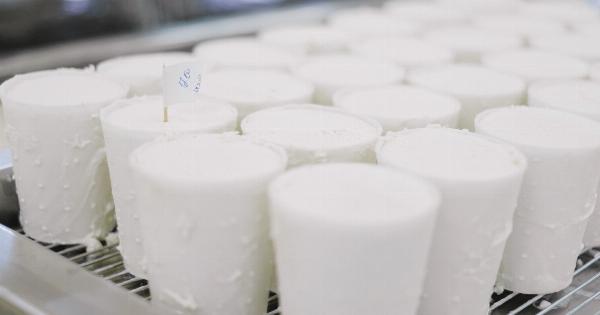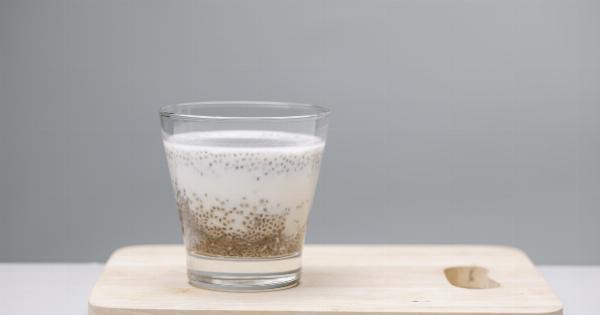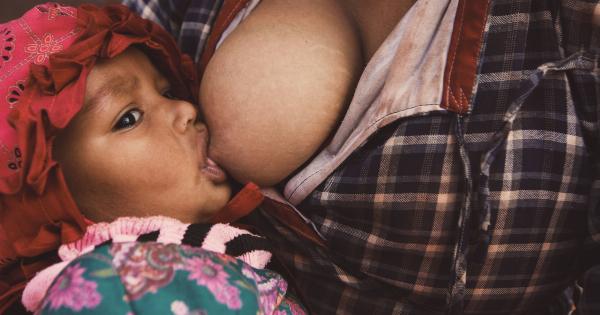Breastfeeding is a wonderful way to nourish and bond with your baby. However, it can also come with its fair share of challenges.
One of the most common issues many breastfeeding mothers face is mastitis, which is an infection that can cause pain, swelling, and inflammation in the breast tissue. While mastitis can be quite uncomfortable, the good news is that there are several steps you can take to prevent it from occurring. In this article, we will discuss some effective strategies to help you prevent mastitis when breastfeeding.
1. Ensure Proper Latching
Achieving a proper latch is crucial for both your baby’s feeding and your comfort. When your baby has a deep latch, it allows for efficient milk flow and minimizes the risk of milk ducts becoming blocked.
Aim to position your baby in a way that allows their mouth to encompass the entire areola, making sure that their lips are flanged outwards.
2. Empty Breasts Regularly
One of the most effective ways to prevent mastitis is to ensure your breasts are regularly and thoroughly emptied during each feeding session.
Leaving your breasts engorged or partially drained can lead to blocked milk ducts, which can then result in an infection. If your baby isn’t able to fully empty your breasts during a feeding, consider using a breast pump to remove any leftover milk.
3. Avoid Skipping Feedings
Skipping or delaying feedings can increase the risk of developing mastitis. It is important to breastfeed your baby on demand, which means feeding whenever your baby shows signs of hunger.
Emptying your breasts frequently helps maintain the flow of milk and prevents any potential buildup or blockages.
4. Massage Your Breasts
Gently massaging your breasts can help stimulate milk flow and prevent any clogged ducts. You can use your hands or a warm compress to massage your breasts in gentle circular motions before, during, and after each feeding.
This technique can also provide relief if you have any tenderness or discomfort.
5. Maintain Good Breast Health
Ensuring proper breast hygiene is important in preventing mastitis. Make sure to keep your nipples clean and dry, as excessive moisture can create an environment that is conducive to bacterial growth.
After feeding, gently wipe your nipples with a clean cloth and allow them to air dry.
6. Avoid Tight-Fitting Bras
Wearing bras that are too tight can restrict milk flow and put unnecessary pressure on your breasts. Opt for well-fitting, supportive bras made of breathable materials.
A properly fitted bra will provide the necessary support without compressing or constricting your breasts.
7. Practice Good Hand Hygiene
Keeping your hands clean is essential to prevent the spread of bacteria. Wash your hands thoroughly with soap and water before each feeding session.
If you don’t have access to water, use a hand sanitizer with at least 60% alcohol content to disinfect your hands.
8. Take Care of Yourself
Maintaining your overall health and well-being is vital in preventing mastitis. Make sure to get enough rest, eat a balanced diet, and stay hydrated.
It’s also important to avoid unnecessary stress, as stress can negatively impact milk supply and increase the likelihood of mastitis.
9. Gradually Wean Your Baby
When it’s time to wean your baby from breastfeeding, it’s best to do it gradually. Abruptly stopping breastfeeding can increase the risk of developing mastitis.
Slowly reduce the number of breastfeeding sessions and replace them with alternative feeding methods over time.
10. Seek Prompt Treatment for Clogged Ducts
If you notice any signs of a clogged milk duct, such as a localized tender lump, redness, or warmth on your breast, it’s important to address it promptly.
Apply a warm compress to the affected area, gently massage it, and continue breastfeeding or pumping to encourage milk flow. If the symptoms worsen or persist, consult with a healthcare professional.
























